Table of Contents
Introduction
Saffron is one of the world's most expensive spices, prized for its vibrant color, unique flavor, and aroma. But what exactly is saffron used for? This guide covers the top 6 essential uses, from classic dishes to health applications, and provides practical tips for using and buying saffron.
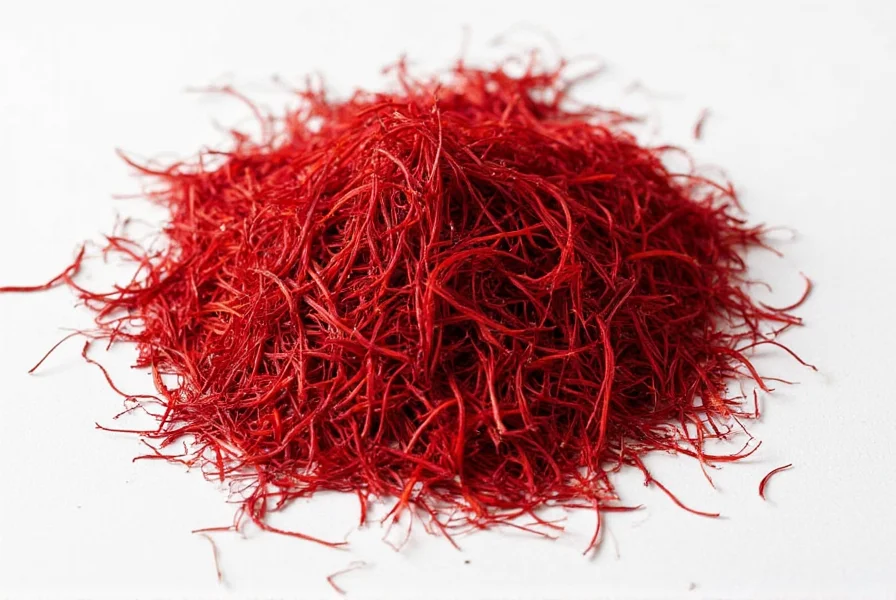
What's Saffron Used For?
Here are the top 6 essential uses of saffron:
- Culinary Delight: Saffron is a staple in traditional dishes like Spanish paella, Indian biryani, Persian saffron rice, and Italian risotto alla Milanese.
- Color Enhancer: Its natural pigments give dishes a rich, golden hue, making it popular in desserts, sauces, and rice dishes.
- Aromatic Boost: Saffron adds a distinct floral note that elevates the flavor profile of savory and sweet dishes.
- Mediterranean & Middle Eastern Cuisine: It's essential in stews, soups, and meat dishes across Iran, Greece, Turkey, and Morocco.
- Natural Dye: Historically used to color fabrics and foods before synthetic dyes existed.
- Health Applications: Some studies suggest potential mood support, eye health benefits, and antioxidant properties, though culinary amounts are typically too small for medicinal effects.
Practical Tip List: Using Saffron Like a Pro
- Soak it first: Release flavor and color by soaking threads in warm water, broth, or milk for 15–30 minutes before adding to dishes.
- Use sparingly: A few threads flavor entire pots of rice or soup. Start with 15-20 threads for 4-6 servings.
- Add at the end: Preserve delicate aroma by adding saffron near the end of cooking, especially in risottos or sauces.
- Pair wisely: Complements seafood, chicken, mushrooms, and dairy-based dishes best.
- Store properly: Keep in an airtight container away from light and moisture to maintain potency.
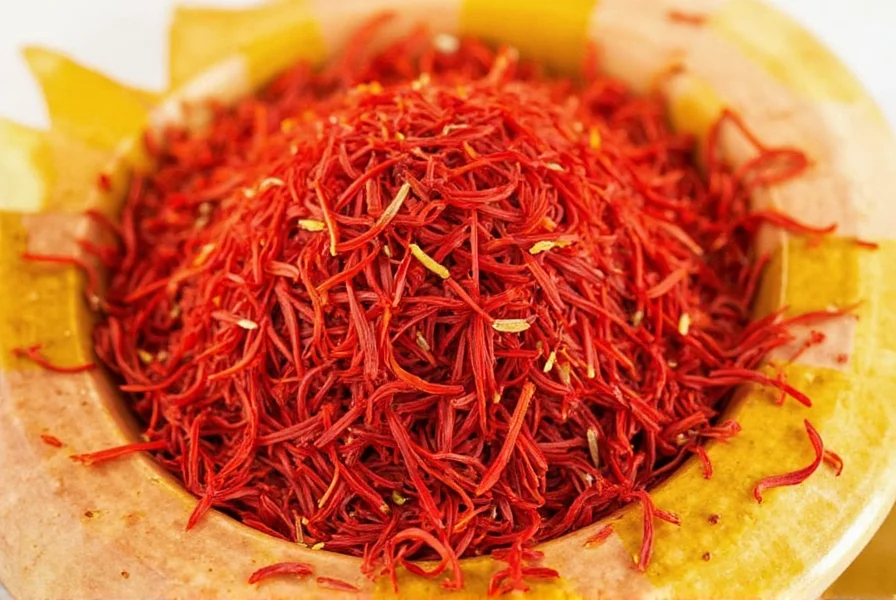
What Is Saffron?
Saffron is derived from the dried stigmas of the Crocus sativus flower. Each flower produces only three stigmas, which are hand-picked and carefully dried. Due to this labor-intensive process, saffron is one of the most expensive spices globally.
Its deep red threads have a unique, slightly sweet floral aroma with subtle earthiness. When used in cooking, it imparts a beautiful golden hue and complex, delicate flavor that's hard to replicate.
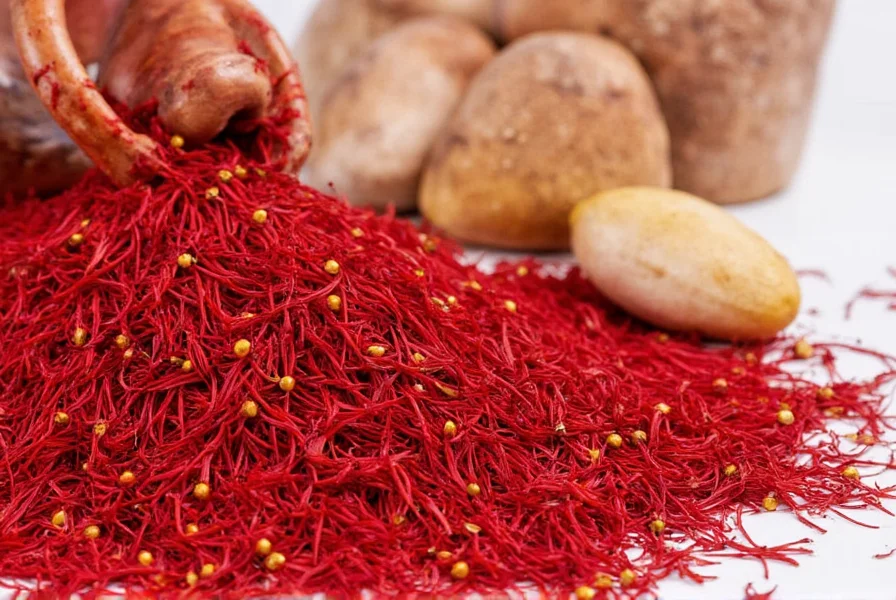
Cooking with Saffron
Using saffron transforms ordinary meals into extraordinary ones. Here's how to use it effectively:
Paella
Paella showcases saffron's magic—soak threads in warm broth and stir into rice as it cooks for signature yellow color and nutty flavor.
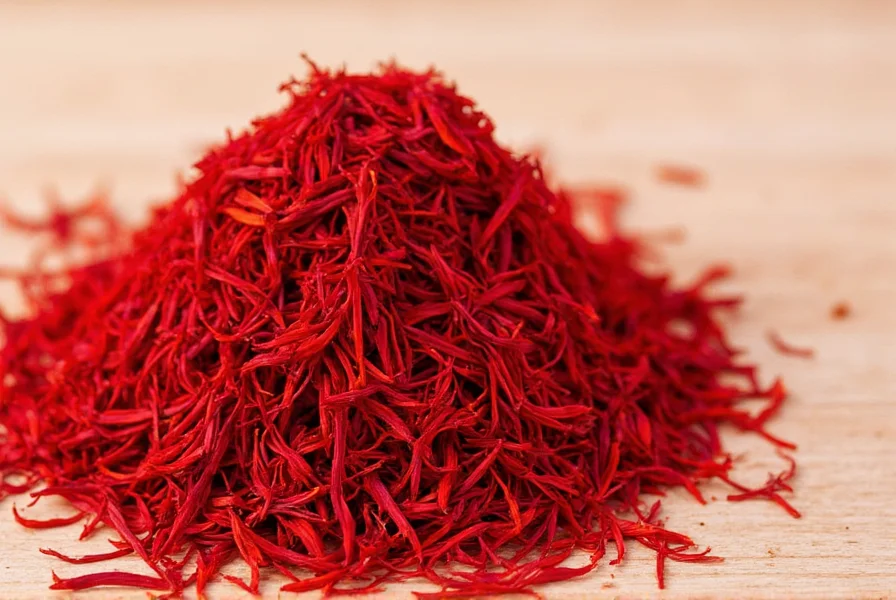
Risotto alla Milanese
This creamy Italian dish uses saffron to enhance buttery texture and achieve iconic golden color. Add a pinch during final cooking stages.
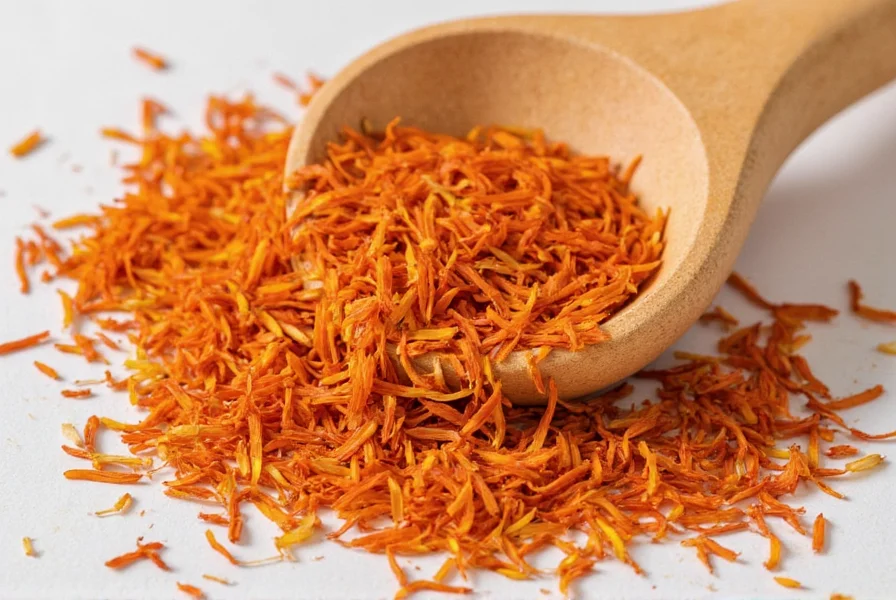
Deserts & Beverages
Saffron works beautifully in sweet applications. Try it in ice cream, custards, rice pudding, or saffron tea (steep threads in hot water with honey or cardamom).
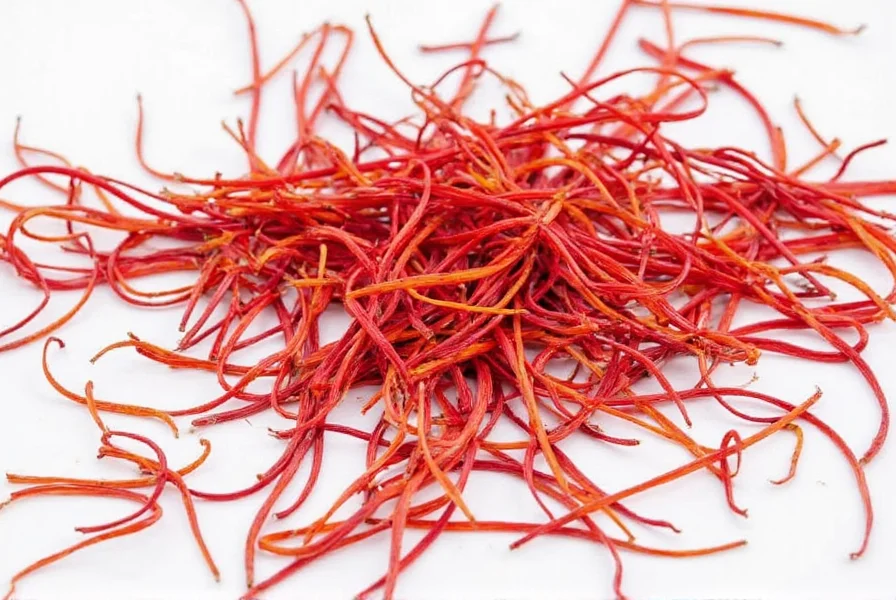
| Feature | Quality Saffron | Low-Quality Saffron |
|---|---|---|
| Color | Deep red with minimal yellow or brown | Pale red or orange; often mixed with other colors |
| Texture | Firm, dry, and not sticky | Moist, soft, or clumpy |
| Aroma | Floral, slightly sweet, and strong | Weak, musty, or chemical-like |
| Price | Expensive (typically $10–$50 per gram) | Very cheap (often under $1 per gram) |
When shopping for saffron, look for reputable brands from Iran, India, or Spain. Avoid products with artificial smells or unnaturally bright colors.
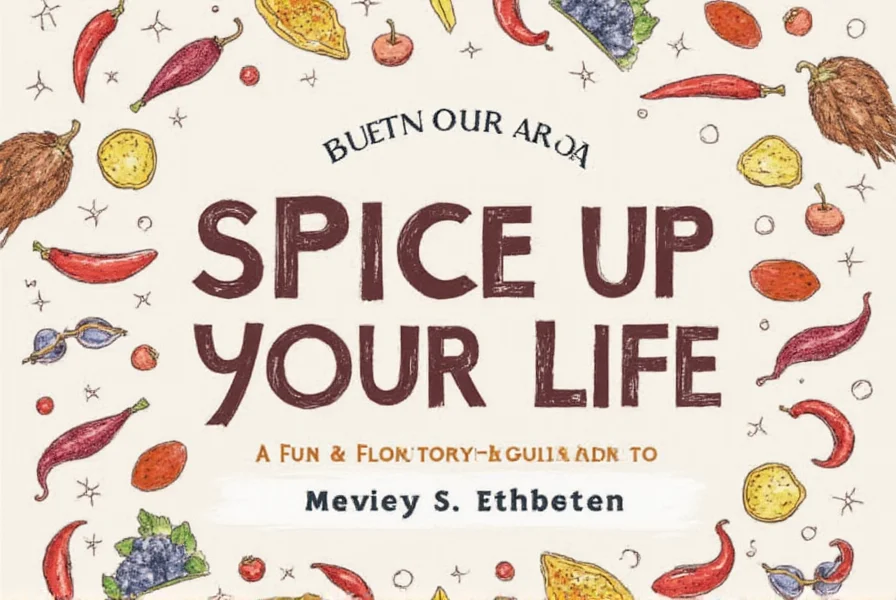
Product Highlight: Iranian Saffron
- Features: Intense aroma, deep red color, and rich flavor.
- Advantages: Considered the gold standard by chefs worldwide.
- Use Cases: Ideal for high-end dishes where flavor and color matter most.
- Target Audience: Serious cooks, professional chefs, and connoisseurs.
- Suitable Occasions: Special dinners, gourmet cooking, or elevating everyday dishes.
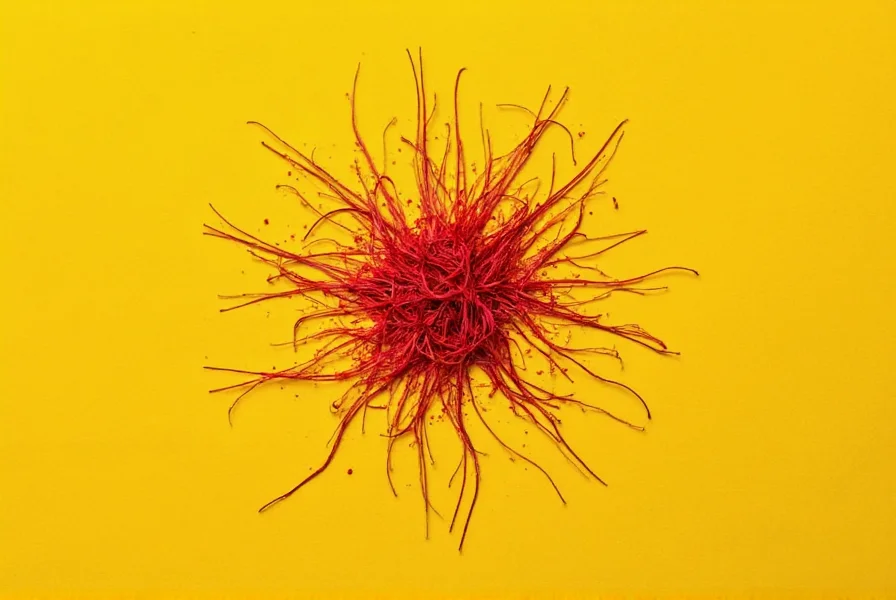
Frequently Asked Questions About Saffron
What is saffron primarily used for in cooking?
Saffron is primarily used as a flavoring agent, natural colorant, and aromatic enhancer in global cuisines. It's essential in dishes like Spanish paella, Persian rice, Italian risotto, and Indian biryani where its golden color and unique flavor are signature elements.
How much saffron should I use in my recipes?
A little saffron goes a long way. For 4-6 servings, use 15-20 threads (about 0.1 grams). Always start with less—you can add more but can't remove excess. Quality saffron delivers both color and flavor with minimal amounts.
Can saffron be used in sweet dishes and beverages?
Yes! Saffron works beautifully in desserts like ice cream, custards, and rice pudding, and beverages like saffron tea. Its floral notes complement sweet ingredients, creating sophisticated flavor profiles.
What are the health benefits associated with saffron?
Some studies suggest potential mood support, eye health benefits, and antioxidant properties. However, culinary amounts are generally too small for medicinal effects. Always consult a healthcare provider for health concerns.
How can I tell if saffron is authentic and high quality?
Authentic saffron has deep red threads with minimal yellow/orange, strong floral aroma, and gradually releases golden-yellow color when soaked in warm liquid (not immediate red). Avoid cheap saffron—genuine saffron is expensive due to labor-intensive harvesting. Threads should feel dry and brittle.
Why is saffron so expensive compared to other spices?
Saffron is expensive because each Crocus sativus flower produces only three stigmas, which must be hand-picked. It takes approximately 75,000 flowers to produce one pound of saffron. The harvesting process is extremely labor-intensive and time-sensitive, making it one of the world's most expensive spices by weight.
Conclusion
Saffron is more than just a spice—it's a culinary gem that brings warmth, color, and complexity to dishes worldwide. Whether making paella, risotto, or sweet desserts, understanding its uses unlocks its full potential.
Remember: a little saffron goes a long way. Treat it with care, and you'll elevate everyday meals with a touch of luxury. Happy cooking!
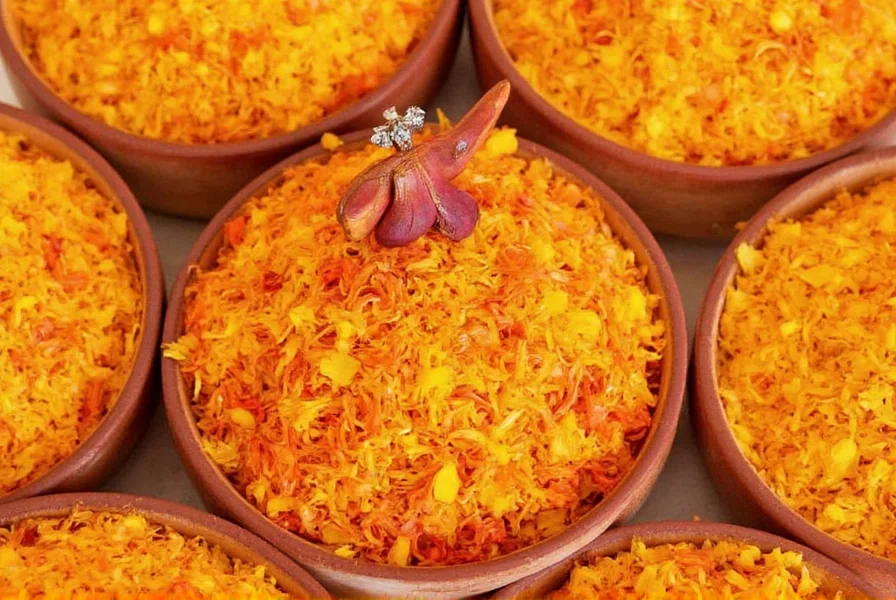

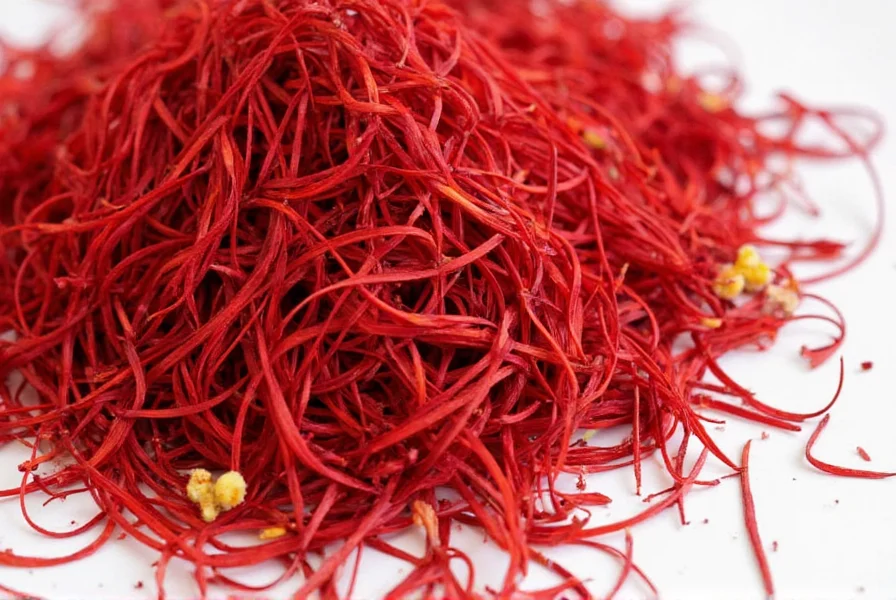









 浙公网安备
33010002000092号
浙公网安备
33010002000092号 浙B2-20120091-4
浙B2-20120091-4